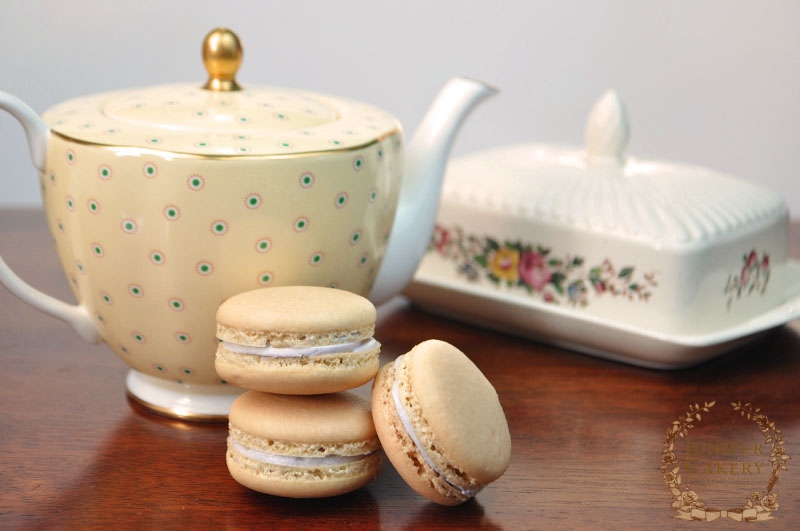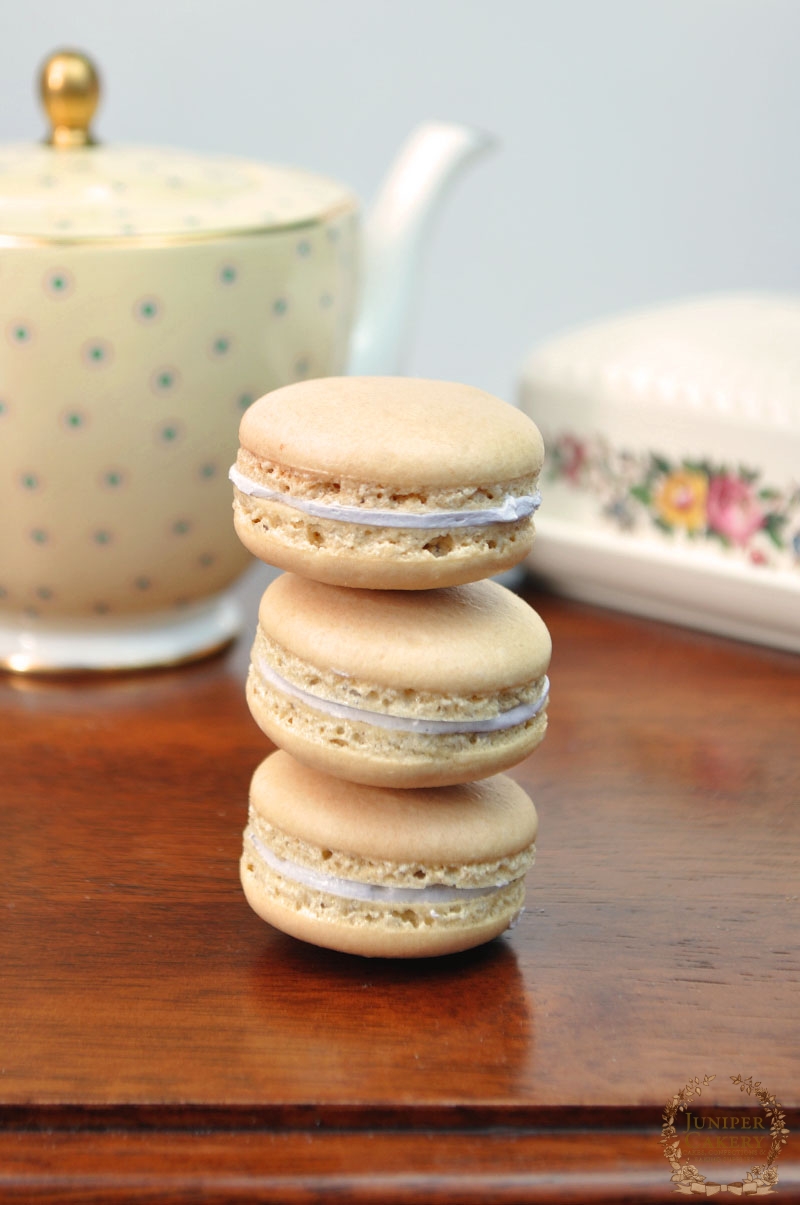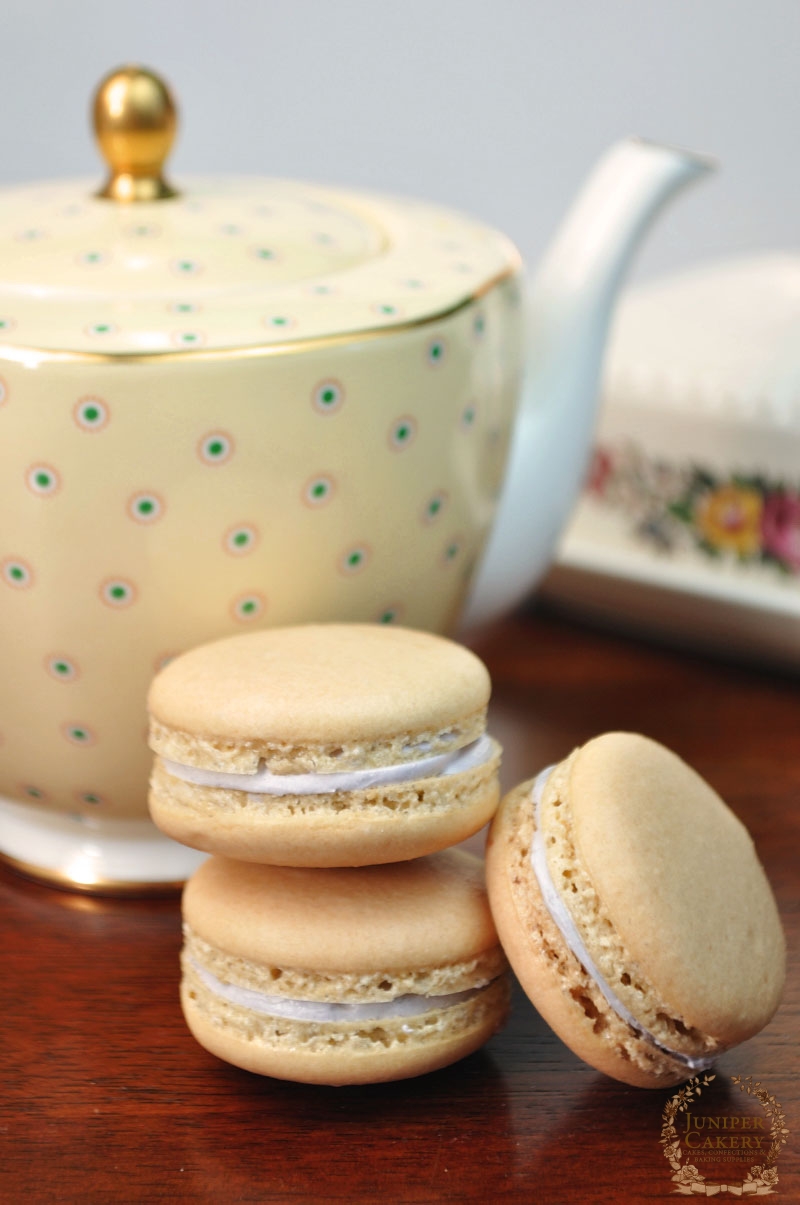Every season offers a welcome excuse to whip up and try some wonderful flavour combinations. For this we are eternally grateful as we do enjoy putting our eager palettes to the test! We look forward to the floral and candy tastes that come with the spring months and today we’re sharing our recipe for delightfully fragrant Honey and Lavender Macarons!

We’ve been whipping up these fabulous French confections for years and never get bored of creating them. When we first ever tried making these every batch came out random; some were utterly perfect with ruffled feet and non-hollow bottoms (a macaron faux pas if ever there was one) and others bumpy and sans-ruffled edges. Now every batch we create turns out perfect so if this is your first time dealing with macarons don’t feel deflated if they don’t come out of the oven just right… just keep trying and you’ll master them eventually! The most important ingredient when it comes to macaronage (making macarons) is patience.

- FOR THE HONEY MACARON SHELLS... 115g ground almond flour
- 230g icing sugar
- 72g caster sugar
- 144g egg whites
- 2g salt
- 1 tablespoon set honey
- Ivory/Caramel gel paste food colour (optional)
- 1 lemon
- Flat baking tray
- Good quality baking paper or a silicon mat
- Disposable piping bag
- Round piping tip
- FOR THE LAVENDER BUTTERCREAM
- 200g butter
- 200g icing / confectioner's sugar
- 6-12 drops of lavender essence
- Violet gel paste food colour
- Disposable piping bag
- Round piping tip
- MACARON SHELLS... Your almond flour needs to be as fine as possible so if you can grind it further before using this will safe you time later. When ready mix the almond flour together with the icing sugar by sifting two to three times. You may have granules of almond flour left in your sieve. If this happens it would be perfectly fine to discard this if it is around one levelled teaspoon’s worth. If you have more try grinding the remaining or using the back of a spoon against your sieve to break it down enough to pass through. To add flavour to the shells try as best as you can to only use dry ingredients (e.g. for lavender grind down edible lavender florets or sprinkle the flowers on top before putting in the oven). You can, however, get away with a little bit of s sticky ingredient like honey if this is added at the egg whipping stage.
- Wipe down a clean metal or glass (never plastic as plastic soaks in fats which can ruin your meringue) mixing bowl and whisk with lemon juice. The lemon makes sure that any fat and grease disappears. Dry down with a clean cloth.
- Add your egg whites into the mixing bowl and mix on high speed until white and frothy. With the mixer still on sprinkle in the salt and caster sugar. These stabilise the egg whites so they whip up lovely and firm. Mix until stiff peaks are formed. If colouring your macarons add the gel paste (never liquid) colour in now and mix until incorporated but never overmix your meringue! It is also at this point you'll need to add in the honey. You can test if your egg whites are ready by the traditional method of hold the bowl upside down over your head! If the mix stays put then it’s ready. Macarons can be temperamental so it may take a few tries to get them just right.
- Fold half of your dry mix into your meringue mix gently until the dry ingredients are almost fully incorporated. Once this is done fold the mixed ingredients into the rest of the dry mixture that is left.
- With your pastry/piping bag holder get a disposable piping bag ready and fitted with a plain round tip. The mix at this stage can be fairly runny so you would need to fold the lower/tip section of the bag over to block any mix from running out. Pour the macaron mix into the piping bag.
- Prepare a flat baking tray with good quality baking paper (don’t use cheap paper and remember to use baking paper not parchment).
- Now is the time to pre-heat your oven to Gas Mark 3 / 325 Fahrenheit / 170 Celsius.
- Carefully pipe your ‘coins’ of macarons approximately 3.75cm in diameter and around 2cm apart. Get rid of any air bubbles inside your macarons by smacking the tray down on a flat surface around 3-4 times. You should see some holes appear on the tops of some of them; don’t worry about these.
- We leave our piped macarons to rest before we even think of letting them near an oven. We’ve seen recipes that don’t call for this, but not leaving them for a while has never worked for us. What you need is for your macaron to develop a ‘skin’. We leave ours to sit for 1 hour to 1 hour 30 minutes. We’ve experimented and left them for shorter and longer periods of time, both yielded some not very elegant results. You’ll know that your macarons have a good skin and are ready to pop into the oven when you touch the top lightly and the batter does not stick to your finger. You should feel and see a ‘skin’ has developed.
- Put your macarons on the middle level of the oven. It is ever so tempting to get as many trays in as you can, but we wouldn’t suggest this unless you’re lucky enough to have a confectioner’s oven. Macarons on the lowest shelf won’t bake as well and macarons placed on the highest will overcook and also discolour.
- Bake for 20 minutes turning the tray around halfway.
- Your macarons should be ready and have ruffled ‘feet’ on the bases of them. Remove the macarons carefully from the paper. Once cooled down these are ready to be filled!
- BUTTERCREAM... Dice the butter into pieces and add half to your mixer.
- Once the butter is smooth gradually add icing sugar and the remaining butter (also diced into cubes) until you get a smooth, creamy texture.
- Add the lavender essence to taste. Using a piping bag fitted with a plain round tip and filled with your delicious buttercream, pipe half your macaron shells and sandwich together with the other half.
- For the best macaron experience leave these to sit in an airtight container for around 24 hours. Then after a gruelling wait you can now enjoy them and serve them to your loved ones or perhaps keep them all to yourself.
- Here are some quick tips to help you get closer to making perfect macarons…
- - Remember to smack your freshly piped macarons at least three times on a flat counter before leaving to rest. This gets rid of any air inside the mix.
- - Leaving your piped macarons to rest for at least one hour helps your macarons establish a good ski. This keeps your macarons in good shape, can eliminate air bubbles and can help create the lovely famous ruffled ‘feet’ on their bottoms.
- - Good macarons have flat and ‘solid’ bottoms with not holes, air pockets, sticky residue (leave in the oven for an extra minute or two if this happens), or concave features.
- - Work quickly when piping as the mixture will be runny. We prefer to pipe from above, but lots of others pipe from the side.
- - Adding in any dry flavour and/or colour gel paste once the meringue is ready reduces the risk of over mixing.
- - Your meringue mix should be stiff, but if you scoop some up in a spoon and throw it back in it should blend back in and not sit on top. If it does sit then mix again on high speed for around 1 minute and repeat until a scooped portion blends. If your mix loses it’s stiff peaks and looks runny then it has been over mixed and you need to begin again with fresh eggs.
- - If you get even the tiniest amount of egg yolk in your separated egg whites before whisking them into a meringue you need to begin again.
- - Don’t worry if you get a little bit of the egg’s chalaza in your mix. The chalaza is a thicker part of the egg white that helps hold the egg yolk in the middle. It can look a little more opaque too.

Now you can sit down and enjoy your macarons! Even if your making them as gifts we’re sure you’ll be able to save a couple for yourself as a treat.

All photographs, designs (including all baked and decorated goods), tutorials and written content belong to and are copyright to Juniper Cakery unless otherwise stated. Please do not copy! Copying and re-publishing our work without our permission or claiming it as your own work could lead to legal action from us. If you wish to feature our work do contact us for permission.


